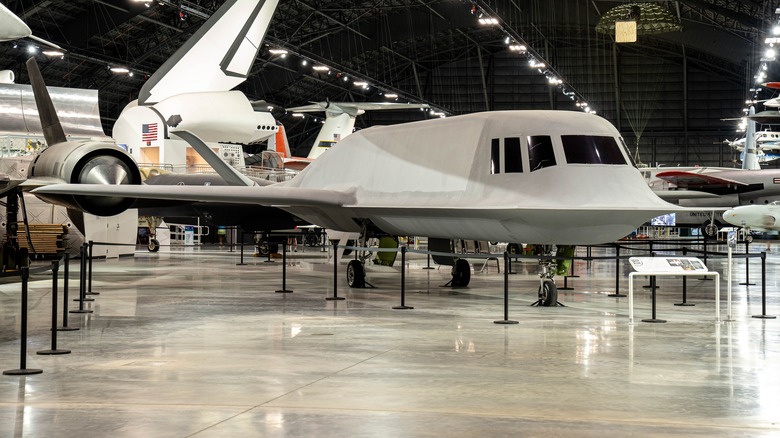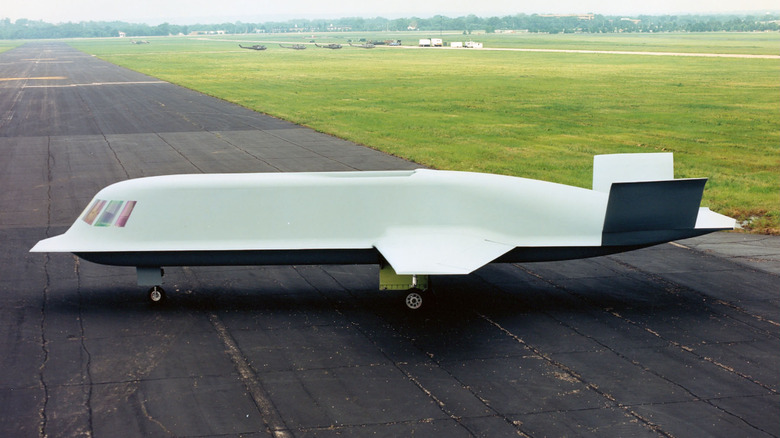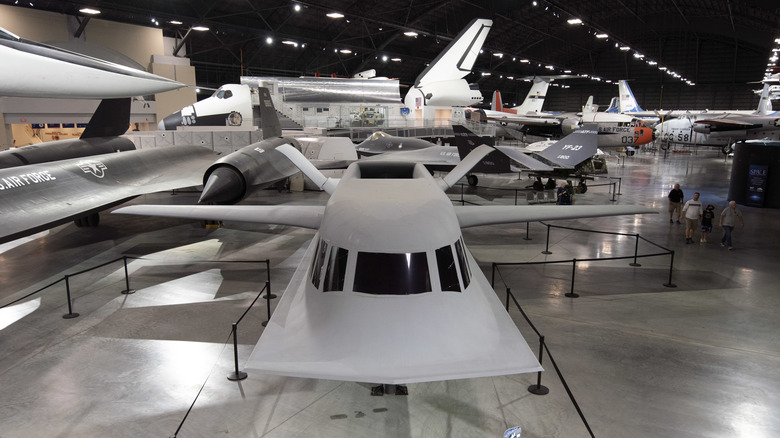This Strange Looking Aircraft Was Way More Advanced Than It Looks
They say that you should never judge a book by its cover, but this is also true in the world of technology. Some devices look sleek, aesthetically pleasing and boast a range of color options. Sometimes, though, things go too far into the opposite direction, and plain, utterly vanilla-looking devices result.
Aircraft don't tend to look glamorous. They're built to be aerodynamic, to fulfill specific missions. This doesn't leave a lot of room to be creative with shapes and such. The likes of the formidable Convair B-36 Peacemaker bomber are rather heavy-handed, no-frills designs, but efficiency and practicality were the ultimate goal. Some of the most revolutionary aircraft are actually some of the most boring to look at.
Northrop's Tacit Blue is a fantastic example. This monochrome marvel would be easy to underestimate at first glance, but beneath that bland exterior was an engine that was capable of extraordinary things.
What was the Tacit Blue?
The Tacit Blue looks like an AI-generated image of a generic, vaguely futuristic-looking aircraft. More space shuttle than airplane in terms of looks. It's even been dubbed "alien school bus." It has an intriguing and vital place in the history of stealth aircraft, however.
Built in the 1980s, the Tacit Blue represented an effort to try and resolve a primary issue facing the development of stealth planes: engines in operation generate tremendous heat. It's difficult to remain hidden when a heat signature lights up like Times Square on radar systems. As the National Museum of the United States Air Force notes, though, the softer shape of the aircraft helped to reduce this problem, and, though it was very unique compared to other craft of the time, it was rather less conspicuous in operation too.
Odd as it looked, the intent behind the machine's design was abundantly clear. Lt. Gen. George Muellner later explained that its aesthetic employed "...curved linear or Gaussian surfaces to achieve signature reduction," according to Flight Global. What the U.S. Air Force wanted was a craft that could approach close to enemy lines, deploy sophisticated radar to monitor movements and do all of this in relative safety. The Tacit Blue was a hugely effective proof of concept in this regard.
What did the Tacit Blue achieve?
The Battlefield Surveillance Aircraft Experimental, as it was also known, was powered by twin Garrett ATF3-6 high-bypass turbofans. It boasted a connection to ground command and sophisticated sensors that could be used without detection. Opponents didn't know where the Tactic Blue was, in short, but it knew where they were. All of this in a compact package of 30,000 pounds with a single occupant.
It did, however, require additional systems to keep it under control. As a result of its unconventional design, John Cashen of Northrop declared to Air & Space Forces Magazine that it was "at the time ... arguably the most unstable aircraft man had ever flown."
Unstable maybe, but it was also extremely innovative. The project was brief, but the sole Tacit Blue that was created was flown 135 times in just three years before being retired in 1985. Far from being consigned to a status as an experimental oddity of yesteryear, the leaps and bounds that stealth technology took thanks to those flights live on. "This technology continues to protect our men and women in uniform, now and for years to come," Air Force assistant secretary for acquisition Arthur L. Money proudly told Air & Space Forces Magazine.


